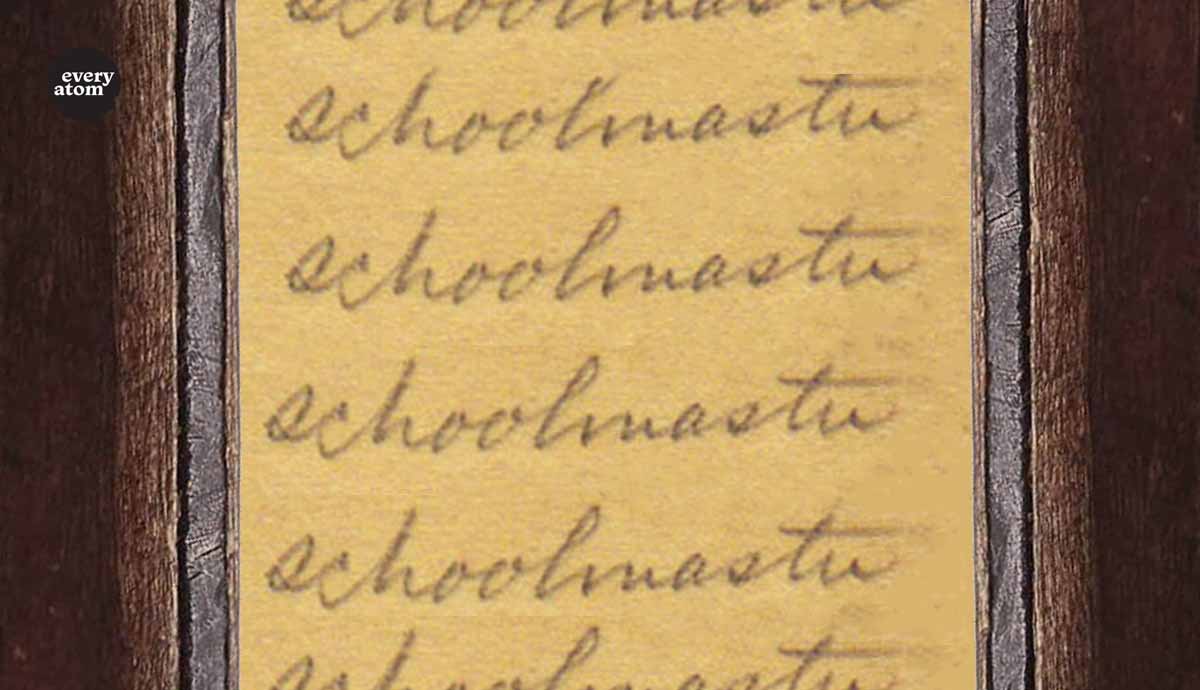Every Atom | No. 78
Introduction to Every Atom by project curator Brian Clements
By 1855, Whitman had a long history of thinking about education. As a young man, he taught school in rural Long Island, which likely made him sympathetic to the interests of students.
While the image of a student destroying a teacher might be jarring to a modern reader, it reflected an especially unorthodox conception of education during Whitman’s era, when students in New York City were often educated by the Lancasterian System, which took classes of up to 500 students and drilled them in basic literacy with military efficiency.
During his short teaching career, Whitman practiced a progressive pedagogy that encouraged students to learn without rote memorization and the physical punishments common during the period. In 1841, his earliest published work of fiction, “Death in a Schoolroom: A Fact” appeared in The United States Magazine and Democratic Review, the nationally distributed journal edited by John O’Sullivan, In this story, the future poet used a morbid tale of a teacher’s cruelty to critique corporal punishment in the classroom.
Student memories of Whitman-as-teacher were mixed. One of Whitman’s students remembered him as always “musin’ and writin’ ‘stead of ‘tending to his proper dooties,” while another recalled “I had other teachers, but none of them ever left such an impress[ion] on me…. [H]ere was a man…who strongly attracted our respect and affection” (Florence Friedman. Walt Whitman Looks at the Schools. King’s Crown Press, 1950. 30).
While Whitman may have been an indifferent teacher, he embraced the persona of the country educator and published ten editorials between 1840 and 1841 entitled “Sun-Down Papers: From the Desk of a Schoolmaster,” where he inhabited the voice of a “schoolmaster,” seemingly at the end of a day of teaching, who mused on topics as diverse as love, death, conspicuous consumption, and the folly of anger.
Even after he left teaching in 1841, Whitman remained an advocate for compassionate pedagogy, as seen in his many editorials about education in The New York Aurora and The Brooklyn Daily Eagle, among others.
Recommended
Nor’easter
Post-Op Appointment With My Father
Cedar Valley Youth Poet Laureate | Fall 2024 Workshop







